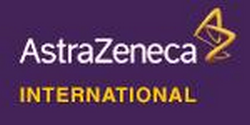Copy of `AstraZeneca International - Glossary of medical and financial terms`
The wordlist doesn't exist anymore, or, the website doesn't exist anymore. On this page you can find a copy of the original information. The information may have been taken offline because it is outdated.
|
|
|
AstraZeneca International - Glossary of medical and financial terms
Category: General technical and industrial > Medical and financial terms
Date & country: 07/01/2008, UK
Words: 147
|
PharmacokineticsThe study of what the body does to a drug.
PharmacologyThe study of how drugs affect a living organism.
Phase IThe phase of clinical study where researchers test a new drug or treatment in a small group (20-80) of people for the first time to evaluate its safety, determine a safe dosage range, and identify side effects.
Phase IIThis phase of clinical study includes the controlled clinical activities conducted to evaluate the effectiveness of the drug for a particular indication or indications in patients with the disease or condition under study and to determine the common short-term side effects and risks associated with the drug. Phase II studies are typically conducted …
Phase IIIThis phase of clinical study is performed after preliminary evidence suggesting effectiveness of the drug has been obtained and is intended to gather additional information about effectiveness and safety that is needed to evaluate the overall benefit/risk profile of the drug and to provide an adequate basis for physician labelling. Phase III studie …
Phase IVPost-marketing studies to delineate additional information about the drug`s risks, benefits and optimal use, including those that may be requested by regulatory authorities in conjunction with marketing approval.
PhRMAPharmaceutical Research and Manufacturers of America, the US pharmaceutical industry association.
PlaceboIn clinical trials, an inert substance identical in appearance to the substance being tested, also known as a sugar pill.
pMDIPressurised metered-dose inhaler.
Poly-ADP-ribose polymerase (PARP)An enzyme critical to the repair of damaged cells and maintenance of cellular energy.
Positron Emission Tomography (PET)A highly specialised imaging technique that uses short-lived radioactive substances to produce three-dimensional coloured images of those substances functioning within the body. These images are called PET scans.
Post-marketing surveillance (PMS)The systematic detection and evaluation of adverse reactions occurring in association with pharmaceutical products under customary conditions of use in ordinary clinical practice.
Pre-clinical (PC) studiesStudies conducted before a drug is tested in human subjects, and which support and help establish boundaries for safe use of the drug in subsequent Phase I studies.
Primary careThe medical care the patient receives upon first contact with the healthcare system, before referral elsewhere within the system.
Profit before taxOperating profit, plus finance income, less finance expense.
ProlactinThe hormone that stimulates milk production after childbirth.
Proof of conceptProof of concept provides clinical confirmation that an investigational product possesses a desired pharmacological effect in patients with the disease of interest. This can be achieved after a positive placebo-controlled study or doseresponse study using a validated surrogate variable or the final clinical outcome variable. Proof of concept also i …
Proof of principleProof of principle is achieved when an intended pharmacological effect results in an expected change in a relevant biomarker in a dose range, which does not cause any major unwanted effects. Proof of principle therefore provides the first measurable evidence that an investigational product might work in humans. Proof of principle is normally demons …
Prophylaxis or Prophylactic therapyA therapy or measure used to prevent disease.
Proton Pump Inhibitor (PPI)A medicine that reduces the production of acid in the stomach.
Qui tam action (in the US)An action brought under a statute that allows a private person to sue for a penalty, part of which the government or some specified public institution will receive.
RARheumatoid arthritis.
RAGRisk Advisory Group.
RespiratoryRelating to or affecting breathing or the organs used to breathe.
RET-kinaseA receptor-tyrosine kinase which is normally involved in maturation of a variety of tissues, including the nervous system and kidney. It is sometimes mutated and has an abnormal function in certain types of thyroid cancer.
RibosomeA large complex molecule that synthesises protein.
RoWRest of world.
SCLCSmall cell lung cancer.
Second-line therapyTreatment administered after the failure of, or in addition to, first-line therapy.
SEK, kronor, kronaReferences to Swedish currency.
Senior Executive Team (SET)a cross-functional, cross-territorial group, established and led by the Chief Executive Officer.
SepsisA life-threatening condition resulting from uncontrolled severe infections.
SHESafety, Health and the Environment.
Specialist careThe medical care the patient receives after being referred within the system.
SRSustained-release.
SSEStockholm Stock Exchange.
StatinA class of drugs that alter cholesterol levels in the blood.
Sterling, £, GBP, pence or pReferences to UK currency.
Target Product Profile (TPP)Statement of the essential attributes of a clinically and commercially successful product, which can form the basis for commercial evaluation and guide Discovery and Development activities.
ThrombosisThe formation of blood clots at sites where they are not required to prevent blood loss.
TriglyceridesThe major form of fat that comes from the food we eat as well as from being producedby the body.
TSRTotal Shareholder Returns.
UKUnited Kingdom of Great Britain and Northern Ireland.
USUnited States of America.
US dollar, US$, USD or $References to US currency.
World Health Organization (WHO)The United Nations` specialised agency for health.
Zollinger Ellison SyndromeA rare gastric acid disorder.

